How to feed cabbage with yeast?
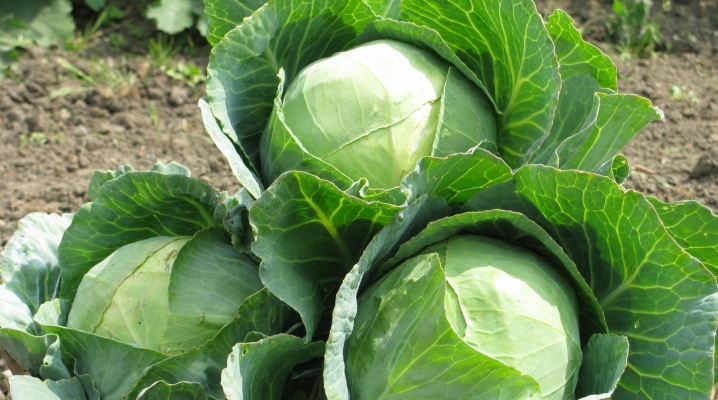
The cheapest and most affordable biological feed for cabbage is yeast. They saturate plants with the necessary minerals, vitamins, proteins and carbohydrates, increase the immunity of the culture, and improve the taste characteristics of the vegetable. However, the use of yeast has its own characteristics - we will talk about them in this article.
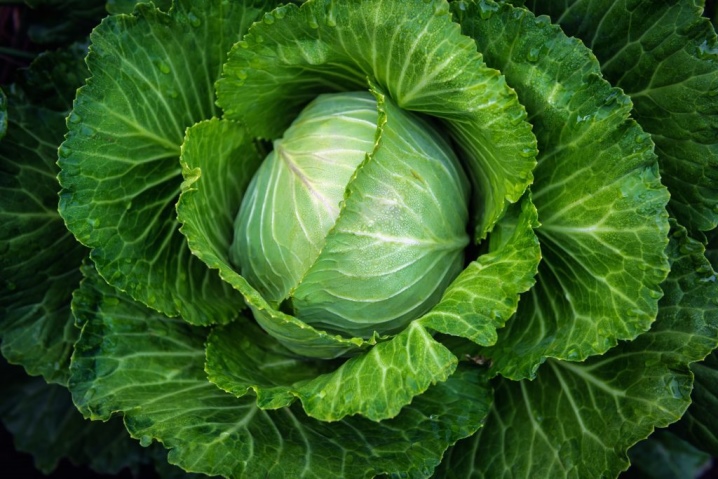
Advantages and disadvantages
Yeast top dressing is an environmentally friendly organic fertilizer. It enriches cabbage and other vegetables with useful microelements, but at the same time it is 100% environmentally friendly. Fertilizer has a beneficial effect on the growth and development of most garden crops. He is especially fond of cabbage, beans, tomatoes, peppers and the vast majority of root crops, except for potatoes, respond well. The advantages of such feeding are obvious.
Yeast is not a chemical, but pure organic matter, so its use is safe for plants and pollinating insects.
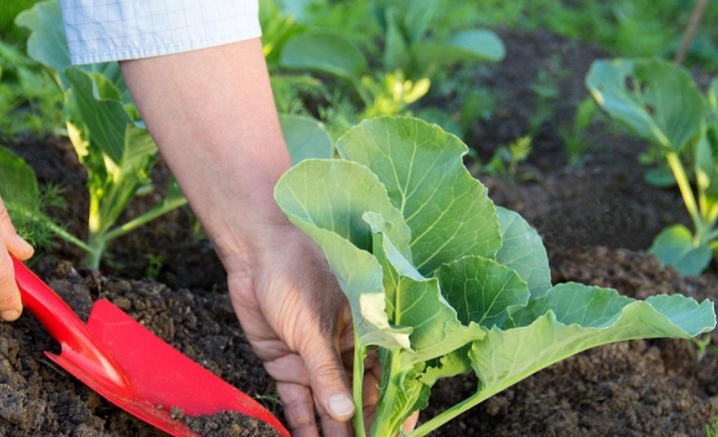
Yeast fungi accelerate the decay of organic matter in the ground and thereby increase the plant's immunity, protect it from pests.
When using yeast, cabbage fruits become more tender and juicy, their taste characteristics increase dramatically.
Yeast is a rich source of protein, its use accelerates the growth and development of plants, and at the same time shortens the period of fruit ripening by 7-10 days. And cabbage heads that have received such a top dressing grow very strong.
Yeast is a fairly persistent product, it is able to withstand temperature fluctuations and other unfavorable external factors.
Yeast fungi activate the work of microorganisms in the soil, thereby improving the composition and structure of the soil, enriching it with useful organic components.
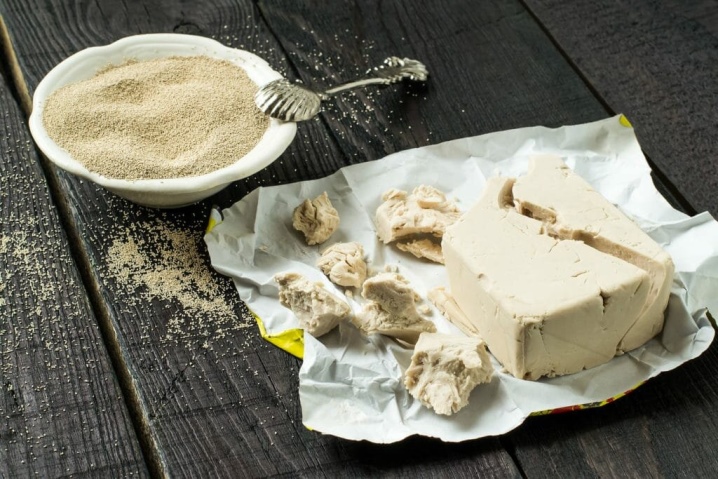
However, yeast cannot be called a fertilizer in its pure form. More precisely, these are mushrooms, which by their nature are an accelerator of organic decomposition. That is why they cannot be used as a standard top dressing, since in this case the organic component of the soil will completely consume itself during one season, and the next year only a poor substrate will remain for planting. To avoid this, yeast components must be combined with other nutrients.
When to use top dressing?
It is better to feed the cabbage with yeast after the ground is thoroughly warmed up. To achieve the expected effect, the fungi must grow, and this occurs exclusively at temperatures from +10 degrees. If the soil is frozen, then the yeast develops too slowly or does not grow at all - in this case, top dressing will not give a noticeable effect. That is why yeast fertilizers are applied in late spring or summer.
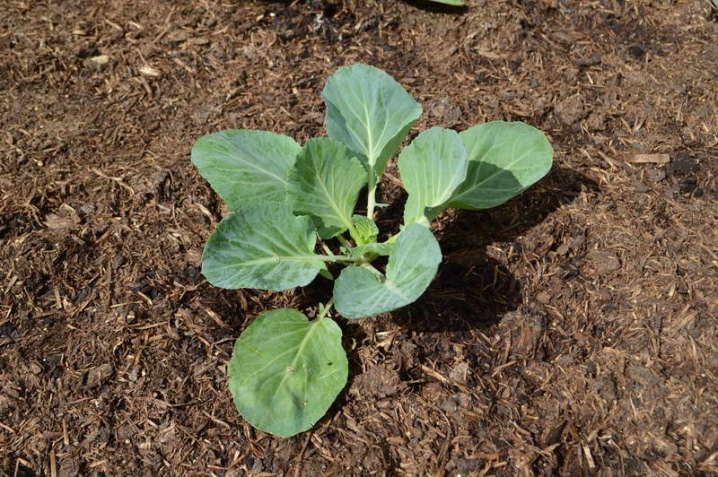
Yeast feeding should not be overused. When in excess, they have the opposite effect and impair the plant's immune system. Such bushes are susceptible to fungal and viral diseases, they are often the target of pests.
Usually, cabbage planted in open ground is processed 3 times per season.
- The first time - at the moment when the temperature begins to rise above zero during transplanting seedlings or picking young plants.
- The second time is at the stage of active growth.
- The third is before harvesting.
Yeast formulations can be used to treat heads of cabbage affected by fungal diseases and insects. The composition gives a good effect if there are signs of stunting or wilting.
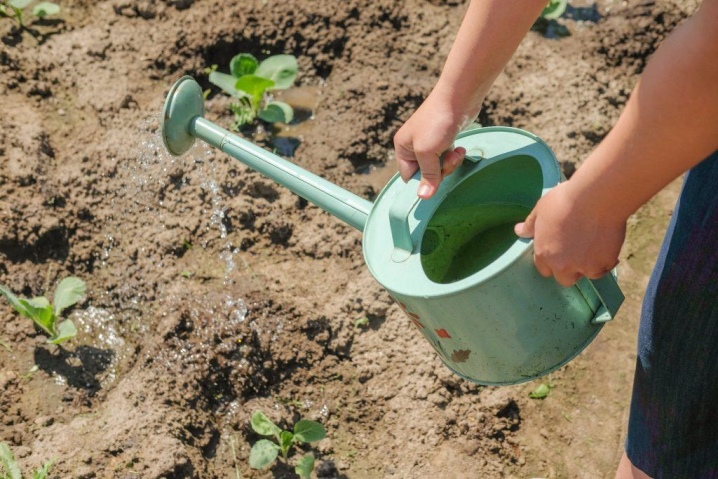
Methods for preparing fertilizers with yeast
For the manufacture of yeast dressings, a fresh or dry product is used.
With dry
To make a nutritional composition from dry yeast, add 150 g of powder and 80 g of sugar to a bucket of water. The solution is mixed well and placed in a warm place to infuse for 3-5 hours. The prepared starter culture is filtered, poured into a large container and diluted with water to obtain a 20-liter solution. The mixture should be infused for a couple of days, only after that it can be used to feed the cabbage bed.
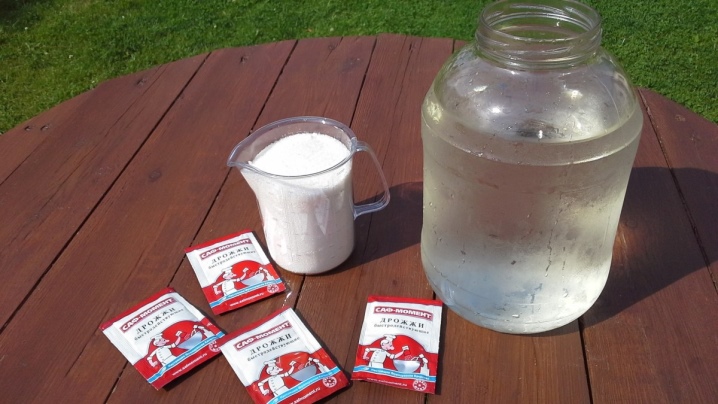
With raw
When using raw yeast, 1 kg of the product is dissolved in 5 liters of heated water and left for 6-10 hours. The resulting starter culture must be diluted with a bucket of cool water and used for feeding.
Important: Fresh yeast has a limited shelf life, depending on temperature, it can be stored for 7-10 days. Of course, they can be frozen, but in this case they will lose some of their nutritional properties. Experts recommend preparing fertilizer from a newly purchased product.

When fermenting a dry or raw product, it should be borne in mind that the activation of yeast is possible only after their contact with oxygen. Therefore, you should not close the container with a tight lid; it is better to use gauze or cloth. The preparation time for the infusion depends on the room temperature. The readiness of the nutrient composition will be indicated by bubbles on the surface and a specific smell.
What can be added to the solution?
To increase the efficiency of feeding and avoid depletion of the soil, the fungal component is combined with other nutrients.
Wood ash
Ash has exceptional usefulness for vegetable crops - it effectively fights against many pests, improves the quality and nutritional value of the soil. It contains magnesium, sulfur, potassium, phosphorus and zinc - these trace elements ensure the rapid growth of cabbage. Yeast top dressing with ash accelerates the growth of heads, therefore the composition is especially in demand when growing late-ripening varieties. In addition, wood ash repels slugs, which often attack cabbage beds.
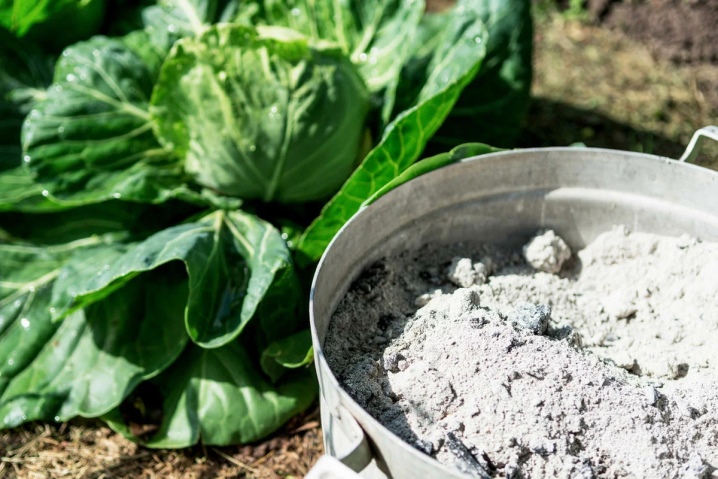
To prepare top dressing, 300 g of wood ash and 100 g of dry yeast are diluted in a bucket of water, boiled over medium heat for about 15-20 minutes, and then allowed to brew for 1.5-2 hours. The sourdough is filtered through cheesecloth and diluted with a bucket of cool water. You can add 50 g of grated soap or a few drops of liquid soap to the finished solution. This will ensure maximum adhesion of the fertilizer components to the green parts of the plant and prevent it from being washed away in case of rain.
To prevent the development of diseases, the resulting solution is applied to the outer side of the heads of cabbage leaves from a spray bottle. If the purpose of feeding is to accelerate the growth of cabbage, then the composition must be applied at the root, in this case it is better not to use soap.
Boric acid
Boron contributes to the correct formation of the head of cabbage; it is used at the stage of picking a young plant. To compose a nutrient mixture, 1 g of the drug is mixed with 250 g of raw yeast mixture, dissolved in 4-5 liters of heated water and insisted for a couple of hours. The finished composition is poured under the root, or used to spray the leaves.
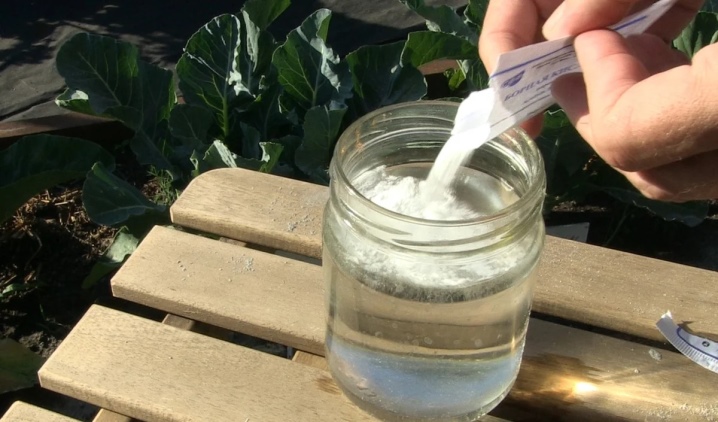
Spoiled jam
Our grandparents used a recipe based on yeast dressing and spoiled jam. Such a composition stimulates active growth of the stem, accelerates the formation of leaves, increases resistance to pests, makes the plant stronger. To prepare a nutritious infusion, 100 g of dry yeast is mixed with 3 liters of fermented jam, 10 liters of water are poured. The solution is covered with a cloth or gauze and left to ferment warm for 7-10 days.

To process cabbage beds, 1 cup of the finished concentrate is diluted with a bucket of water. Processing is carried out by spraying or watering at the root. The procedure is carried out in the morning or evening, or in cloudy weather.
Potato peelings
The use of potato skins together with yeast gives a good effect. Cleaning has found the widest application in vegetable growing. Usually they are laid in the ground before planting seedlings - for this, a handful of potato peels are laid on the bottom of each hole, sprinkled with a thin layer of garden soil, then the seedlings are planted. When combined with yeast, their effectiveness increases many times over.

To make a nutritious infusion, 1 kg of potato peel is poured into 1 liter of water and insisted for about a day so that they soften. After that, the mixture is filtered, the resulting liquid is mixed with a concentrated yeast solution in a ratio of 1 to 10. Instead of potatoes, you can take nettle, it has a similar effect.
How to feed properly?
Yeast is used for root and foliar feeding.
Root dressing
This method is considered the most effective, since nutrients and minerals are delivered directly to the root, and the process of their absorption is much faster. However, it should be remembered that such processing must occur in a strictly defined sequence:
-
the first time feeding is carried out when the first true leaves appear on the plant;
-
the second - after a second dive;
-
the third - after planting seedlings in open ground;
-
the last time the plants need to be watered during the formation of inflorescences.
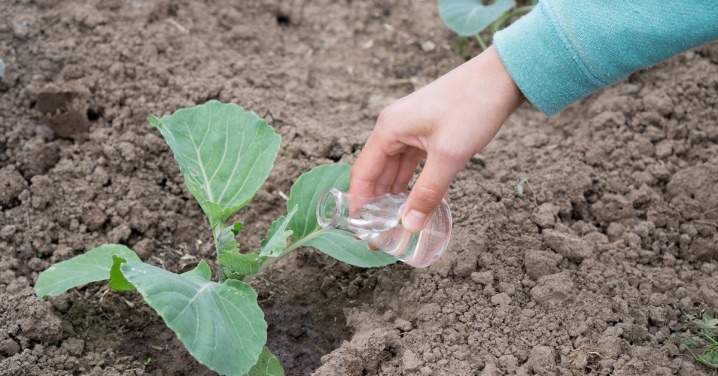
It is very important to observe the dosage, since an excess of yeast components can lead to the death of the roots:
-
for young seedlings, no more than 0.5 liters of fertilizer is needed for each bush;
-
for an adult plant - 1.5-2 liters.
Foliar dressing
It involves spraying the green part of cabbage bushes with ready-made fertilizer. Yeast fungi that get on the leaves are quickly absorbed by the plant tissues. As a result, the cabbage becomes more hardy and strong. It is desirable to carry out such feeding at the first stages of the growing season. It is advisable to spray in cloudy weather or in the evening.
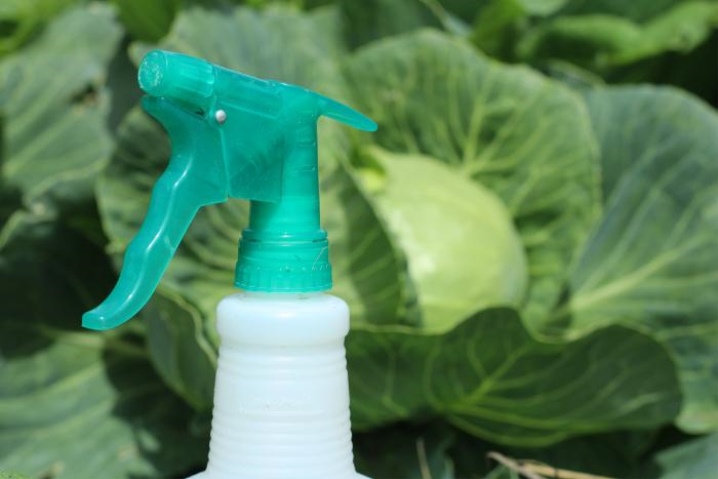
Important: for foliar treatment, you need to use a less concentrated solution than the one that is applied under the root. Otherwise, cabbage leaves may get burned.
In its pure form, it can be used no more than 2-3 times per season with interruptions of at least 3 weeks, otherwise organic soil depletion cannot be avoided. It is advisable to combine such dressings with the introduction of potassium-containing additives, since during the fermentation process, yeast fungi absorb a large amount of potassium from the ground. To mitigate the degeneration of organic matter from the soil, you can use dry grass mulch.
Gardeners, who regularly feed cabbage with yeast, note the absence of pests in their beds, the plant's resistance to fungal and bacterial infections. The fruits are tastier and juicier, and the leaves are crispy.

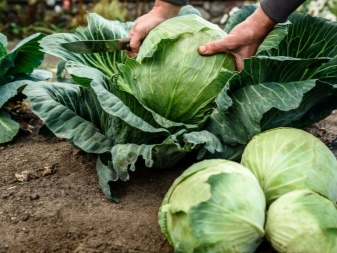













The comment was sent successfully.